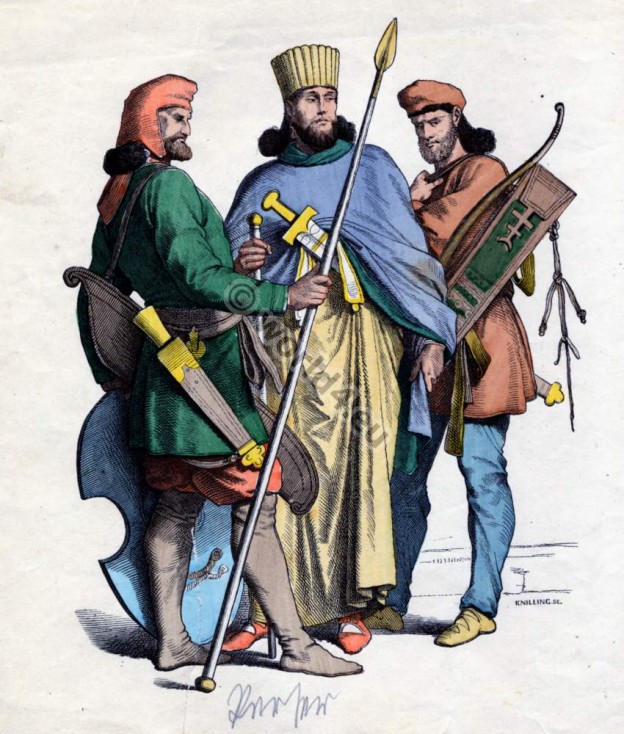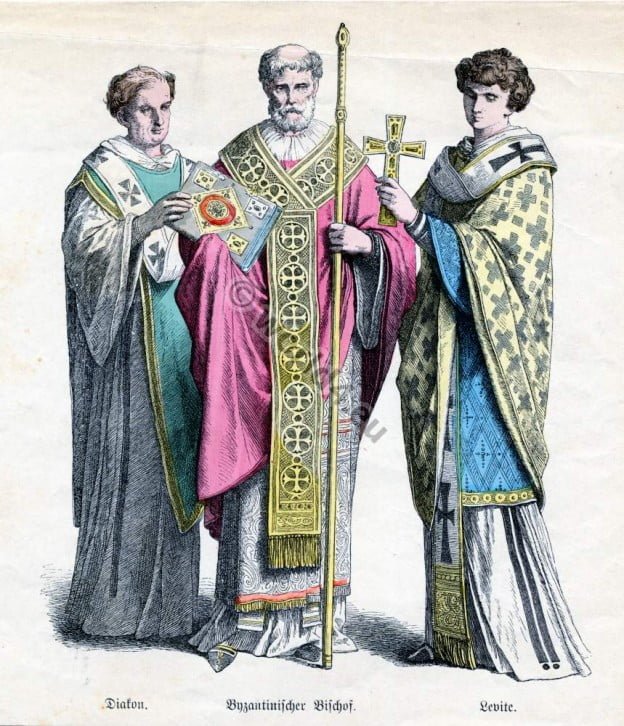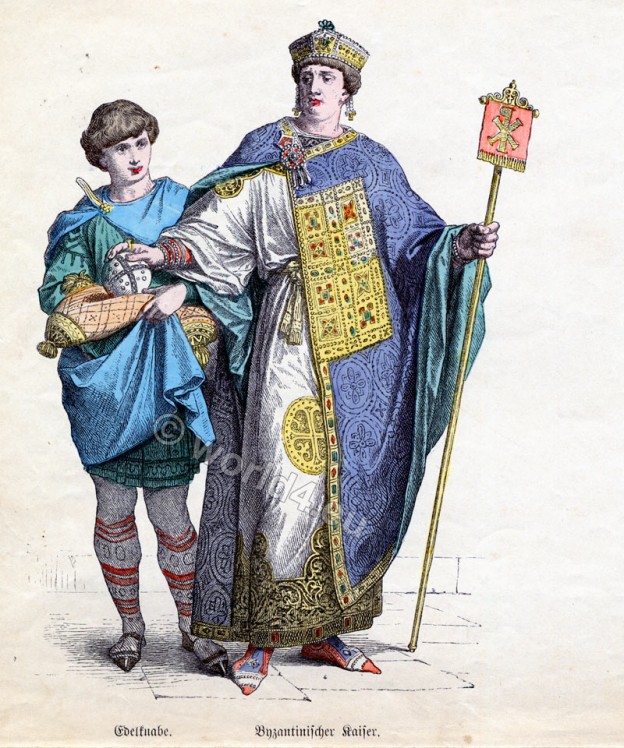Costumes of Noble Roman women and female slave.
Ancient Persian warriors and king costumes.
On the history of costumes. Thirty-fourth sheet. Antiquity. Assyrians, Persians, Medes. Münchener Bilderbogen No. 635. Illustration by A. Müller. Persian warrior. Noble Persian. Persian Warrior. Source: Münchener Bilderbogen 1848 to… Read More
Byzantine Knight and Chancellor. 10th century.
Ancient Byzantine Knight and Chancellor.
Byzantium Bishop, Deacon and Levite costumes.
[su_note note_color=”#e3fdbf”] Byzantium Bishop, Deacon and Levite costumes. [/su_note] Associated with: Byzantine costume history. The Rise of Monachism. Monastic costumes history. The Ancient Greek Costume On the history of costumes.… Read More
Byzantine nobility costumes 10th century. Court dresses.
Byzantine nobility costumes 10th century.
Ancient Byzantine nobility costumes. Emperor and noble boy.
Byzantine emperor and noble page boy. Ancient Byzantine nobility costumes and court dresses.
German Citizen in Arms. First third of the XVIth century.
On the history of costumes. Thirty-eighth arch. XV. and XVI. century. German Citizen in Arms. First third of the 16th century.
Drecoll Model of Needlecord. Paris Spring Season 1913.
Drecoll Model of Needlecord. Paris Spring Season 1913. Drecoll Model of Navy Needlecord cloth. Skirt draped. Coat trimmed with fine silk, braid piped with King’s blue silk. Vest and collar of white… Read More
Court Dress Germany in 1450. Burgundian fashion 15th century
Mi-Parti. Burgundian fashion 15th century.
German girl dress in 1910th.
Romantic Children’s fashion and hair style in Germany. German girl dress in 1910th. Girl in costume, hairstyles and clothing in Germany around 1910.








